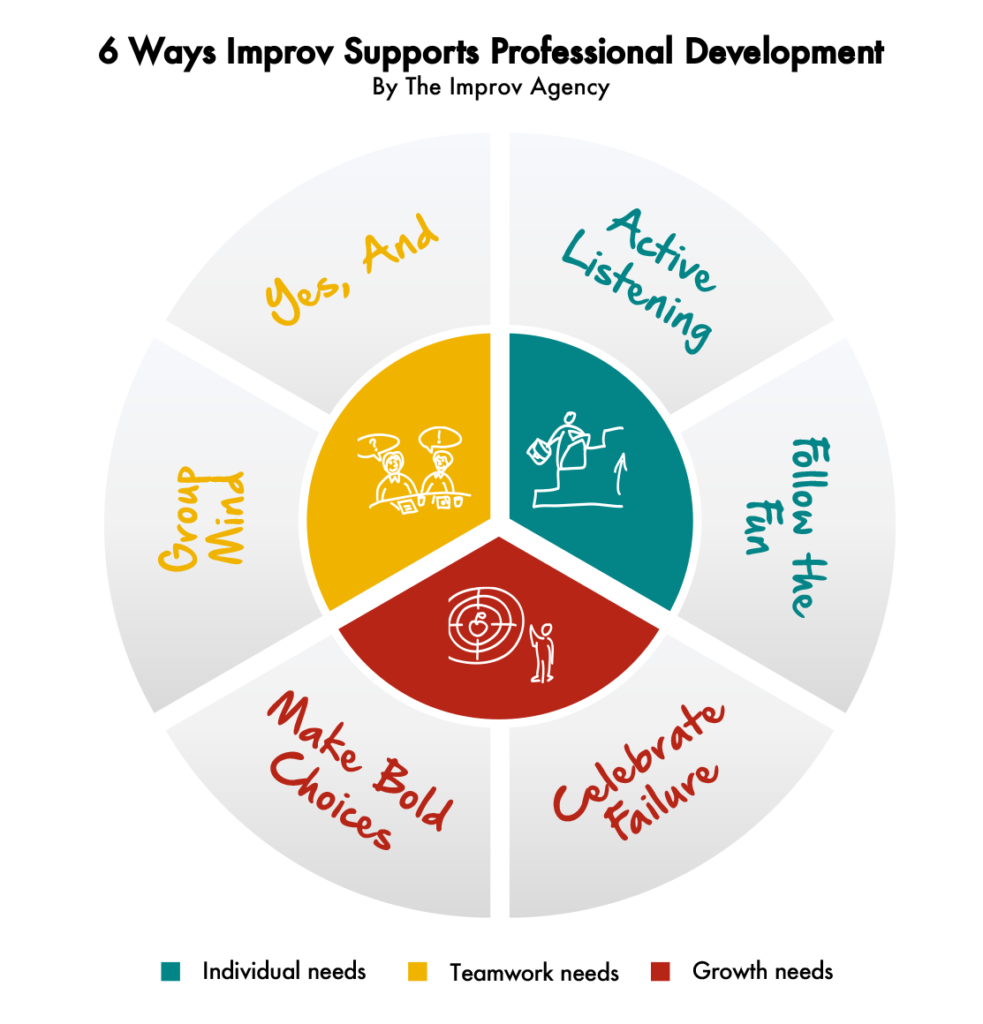One-third (36%) of organizations surveyed in Brandon Hall Group’s State of Leadership Development Study say their leadership development practices are still below average or poor. Organizations are struggling to improve the quality of development for their employees. Those looking for different solutions should consider improvisation as a means for furthering performance.

We look at Gallup’s Employee Engagement Hierarchy in structuring our solution to show how improv not only can help, but fits into existing frameworks.

Individual needs: What do I give?
Employees want to know about their individual contributions and worth to the organization.
- Active Listening: Improvisers listen to understand, not listen to respond. This makes conversations a lot more engaging seeing as the conversation is taking shape based on the contribution of all individuals and is not derailed by a pre-planned response.
- Follow the Fun: In order to develop fruitful scenes, improvisers follow the thing that’s fun. Some say this is the first unusual thing, but in either case, it’s an agreement to focus on an idea. Just play and have fun.
Teamwork needs: Do I belong?
Employees wonder if they’re a good fit for their team.
- Yes, And: The staple of improvisation is Yes, And. Simply put, it’s agreeing and building upon each other’s ideas. When everyone is Yes, Anding, it makes it easier for individuals to fit into a conversation.
- Group Mind: Group Mind is the idea of trusting your team and that you’ll follow their ideas, whatever they are, wherever they go.
Personal growth needs: How can I grow?
Employees need challenges to learn something new and find better ways to do their jobs.
- Make Bold Choices: The best scenes on stage can start or is heightened by making a bold choice that furthers the action in an exciting and funny way.
- Celebrate Failure: Sometimes a choice doesn’t go the way we thought it could, so as improvisers we’re trained to celebrate failures and see what can be born from making mistakes along the way.
When six of our improv tenets are mapped to three of the segments of the employee engagement hierarchy, you can start to see how our training for that stage is just as applicable to training in the professional setting. If you’re interested in learning more about improv for business, reach out to us at [email protected].




